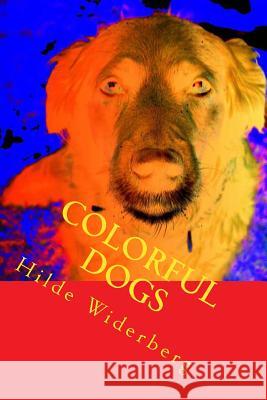Colorful dogs: Strong colored dogs » książka
Colorful dogs: Strong colored dogs
ISBN-13: 9781495459863 / Angielski / Miękka / 2014 / 26 str.
This is a tribute to our best friend, so happy and colorful. The domestic dog (Canis lupus familiaris) is a subspecies of the gray wolf (Canis lupus), a member of the Canidae family of the mammalian order Carnivora. The term "domestic dog" is generally used for both domesticated and feral varieties. The dog was the first domesticated animal and has been the most widely kept working, hunting, and pet animal in human history. The word "dog" can also refer to the male of a canine species, as opposed to the word "bitch" which refers to the female of the species. Recent studies of "well-preserved remains of a dog-like canid from the Razboinichya Cave" in the Altai Mountains of southern Siberia concluded that a particular instance of early wolf domestication approximately 33,000 years ago did not result in modern dog lineages, possibly because of climate disruption during the Last Glacial Maximum. The authors postulate that at least several such incipient events have occurred. A study of fossil dogs and wolves in Belgium, Ukraine, and Russia tentatively dates domestication from 14,000 years ago to more than 31,700 years ago. Another recent study has found support for claims of dog domestication between 14,000 and 16,000 years ago, with a range between 9,000 and 34,000 years ago, depending on mutation rate assumptions. Dogs' value to early human hunter-gatherers led to them quickly becoming ubiquitous across world cultures. Dogs perform many roles for people, such as hunting, herding, pulling loads, protection, assisting police and military, companionship, and, more recently, aiding handicapped individuals. This impact on human society has given them the nickname "man's best friend" in the Western world. In some cultures, however, dogs are also a source of meat. In 2001, there were estimated to be 400 million dogs in the world. Most breeds of dog are at most a few hundred years old, having been artificially selected for particular morphologies and behaviors by people for specific functional roles. Through this selective breeding, the dog has developed into hundreds of varied breeds, and shows more behavioral and morphological variation than any other land mammal. For example, height measured to the withers ranges from 15.2 centimetres (6.0 in) in the Chihuahua to about 76 cm (30 in) in the Irish Wolfhound; color varies from white through grays (usually called "blue") to black, and browns from light (tan) to dark ("red" or "chocolate") in a wide variation of patterns; coats can be short or long, coarse-haired to wool-like, straight, curly, or smooth. It is common for most breeds to shed this coat. Dog is the common use term that refers to members of the subspecies Canis lupus familiaris (canis, "dog"; lupus, "wolf"; familiaris, "of a household" or "domestic"). The term can also be used to refer to a wider range of related species, such as the members of the genus Canis, or "true dogs," including the wolf, coyote, and jackals, or it can refer to the members of the tribe Canini, which would also include the African wild dog, or it can be used to refer to any member of the family Canidae, which would also include the foxes, bush dog, raccoon dog, and others. Some members of the family have dog in their common names, such as the raccoon dog and the African wild dog. A few animals have dog in their common names but are not canids, such as the prairie dog. The English word dog comes from Middle English dogge, from Old English docga, a "powerful dog breed." In 14th-century England, hound (from Old English: hund) was the general word for all domestic canines, and dog referred to a subtype of hound, a group including the mastiff. It is believed this "dog" type was so common, it eventually became the prototype of the category "hound." By the 16th century, dog had become the general word, and hound had begun to refer only to types used for hunting.
Zawartość książki może nie spełniać oczekiwań – reklamacje nie obejmują treści, która mogła nie być redakcyjnie ani merytorycznie opracowana.











